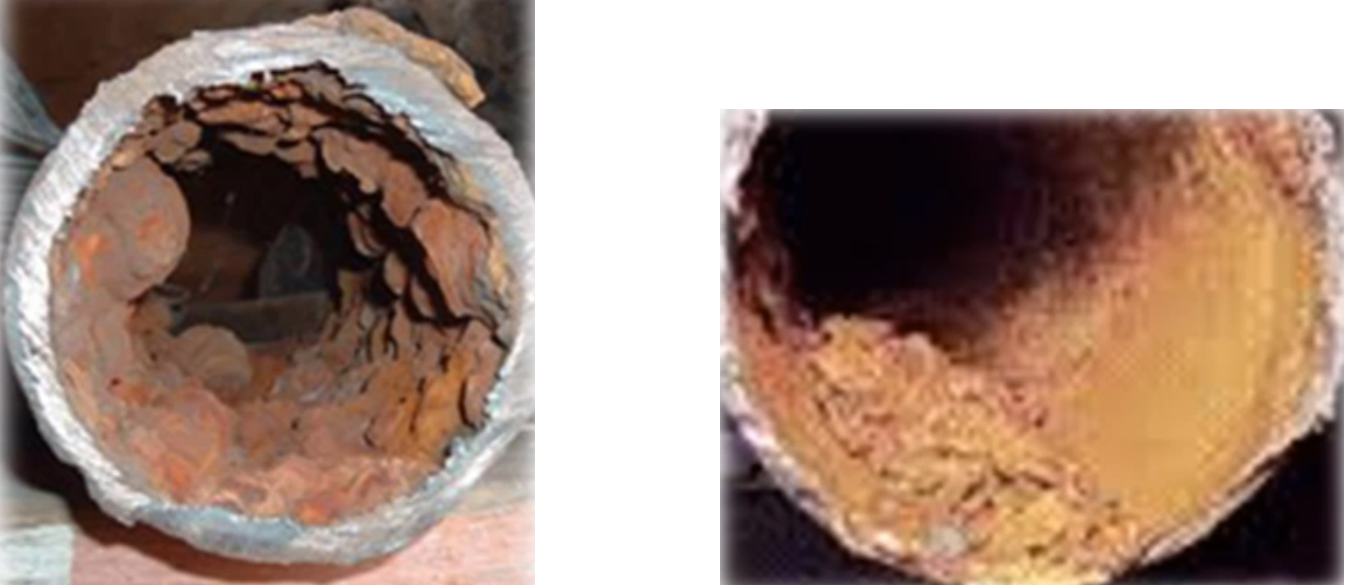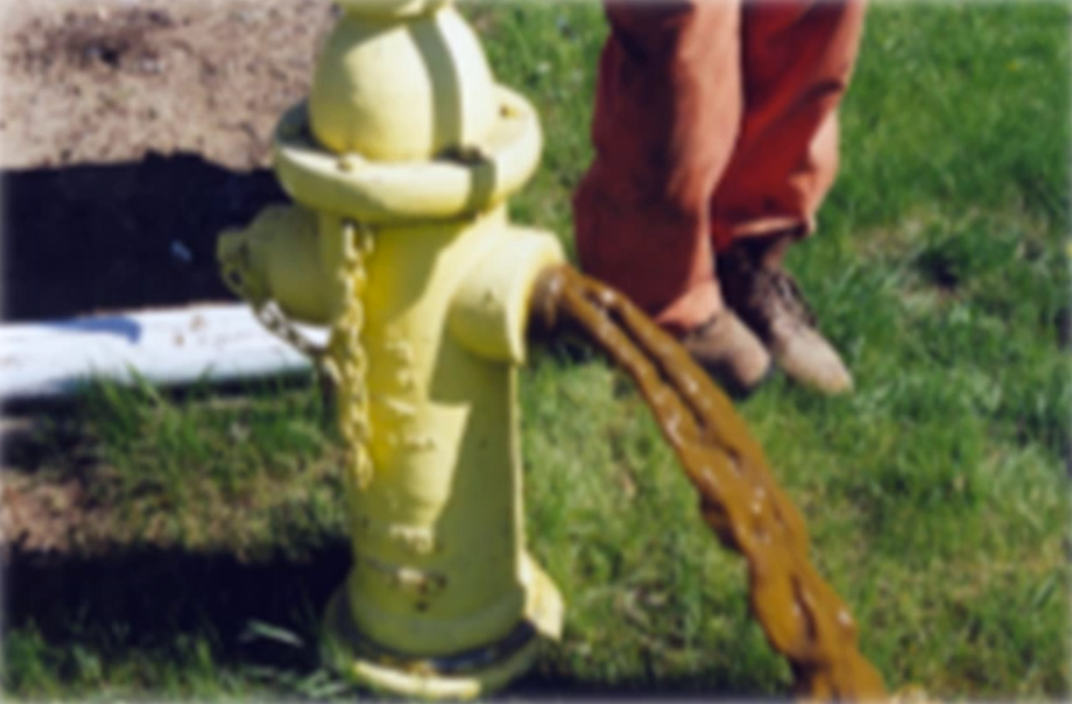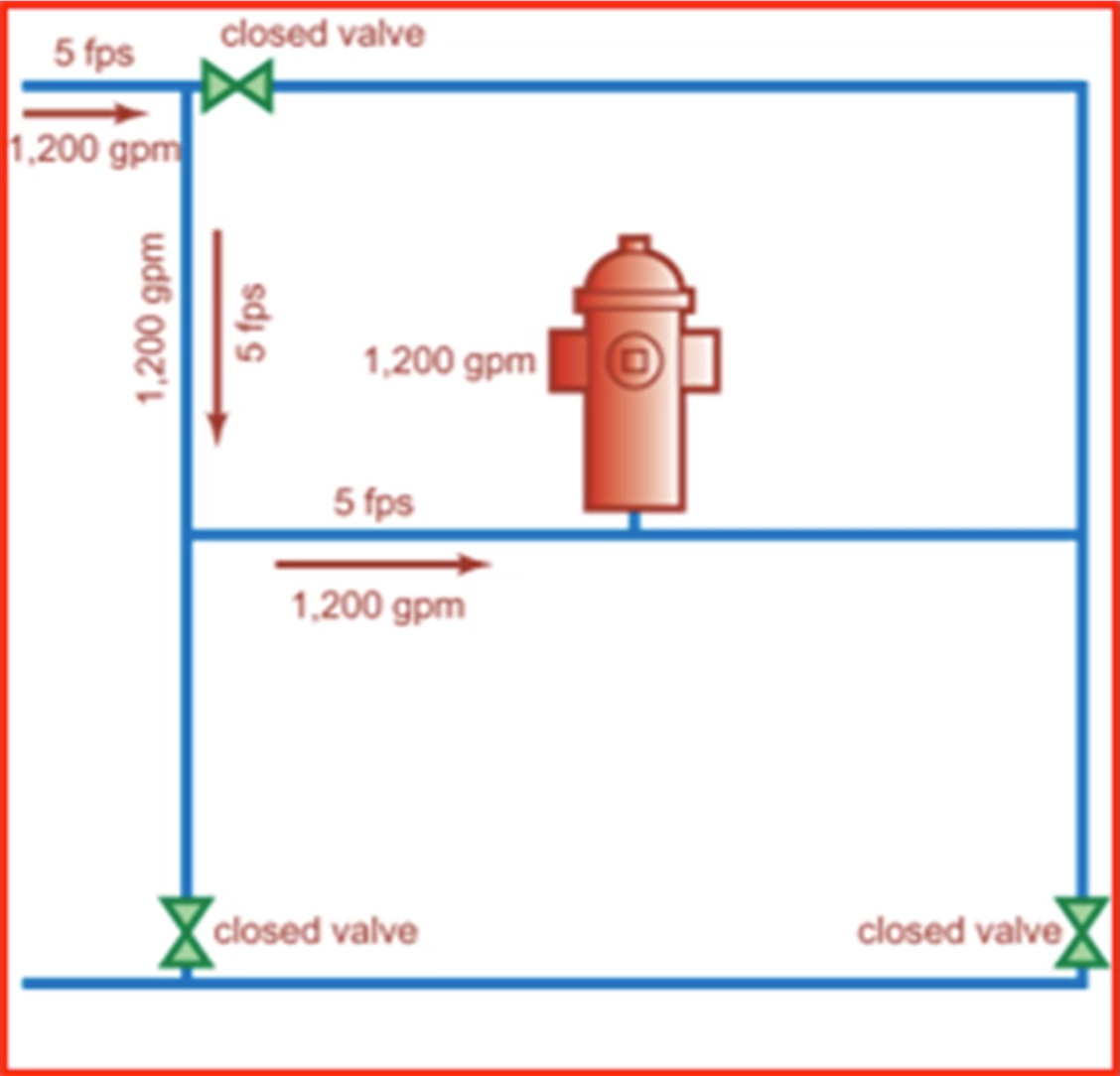Understanding the case for flushing
Any referenced datasets can be downloaded from "Module downloads" in the module overview.
The deterioration of pipes in a water distribution system is a major challenge for water utilities. Unidirectional flushing (UDF) can help to improve water quality.
Pipe Deposits:
- In some pipes, depending on material and age, deposits can form on inside walls.
- Can cause hydraulic capacity to decrease over time.
- Can result from chemical precipitation, microbiological activity, and in the case of cast iron pipes, corrosion buildup.

- Deposits can increase pipe roughness and decrease effective pipe diameter, possibly resulting in:
- Inability to deliver fire flows
- Increased disinfectant demand
- Chlorine degradation
- Complaints about water taste, odor, and color
- Potential for public health issues
- Increased pumping costs
- Reduced hydraulic capacity
- Lower residual pressure
- Certain pipe materials, such as cast iron, are more susceptible to issues.
Unidirectional Flushing:
- Can prolong the life expectancy of a distribution system and reduce the potential for waterborne diseases.
- Can help remove biofilm growth and particulates that lead to chlorine loss, as well as taste, odor, and color concerns.
- In InfoWater Pro UDF, unidirectional flushing is performed by first isolating a portion of the distribution system, then opening fire hydrants or flushing valves.
- Can ideally create enough velocity to scour pipes and remove unwanted materials.
- Flushed water is then discharged through a hydrant.

- Generally begins in portions of system closest to water sources, proceeding to outward extents.
- Important to understand distinction among three flushing methods: UDF, conventional flushing, and continuous blow-off.
UDF Method:
- Most efficient flushing method.
- Involves systematic plan to direct flushed water in single direction along pipe to maximize velocity—can close valves and open hydrants to create one-way flow in water mains.
- Linear flow results in higher velocities, typically 5 or 6 feet per second.

- Maximizes linear velocity near pipe wall—ideal for removing biofilm and hardened corrosion materials.
- Flush begins at clean water source and ends at hydrant, so only clean water is used.
- Eliminates chances of dirty water and debris being inadvertently transported around the system.
- Not feasible in emergency situations, as it takes proper planning and time to carry out.
Conventional Flushing:
- No control of flow direction—for example, opening several hydrants at once in same area until water clears up.
- Effective for removing loose sediment, but less effective at raising pipeline velocities.
- Yields velocities of less than 2 feet per second, so not effective at removing deposits or biofilm.
- Can cause dirty water and debris to be inadvertently transported around the system.
- With lower velocities, often requires larger amounts of water, decreasing efficiency.
- Often used reactively to fix areas of poor water quality or in response to aesthetic complaints.
Continuous Blow-Off:
- Consists of a small, continuous or intermittent water usage to refresh the line.
- Usually seen as a short-term preventive strategy.
- Often used to solve stagnation problems.
- Comparatively low velocity of less than 1 foot per second, and can use large amount of water, resulting in poor efficiency.